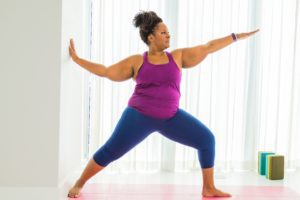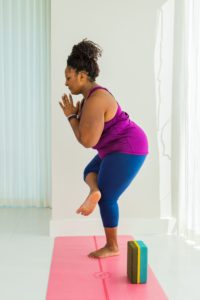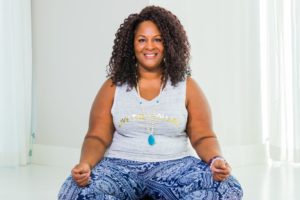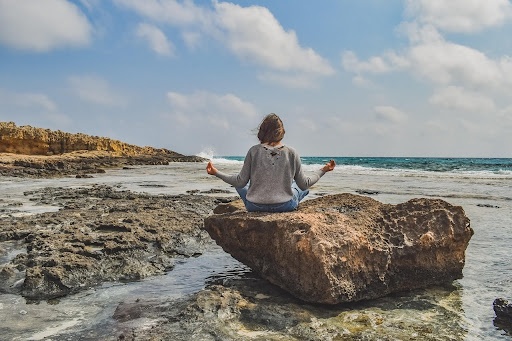What does body positivity really mean?
I’m struggling with the term, “body positivity” these days. It seems as though the term has been watered down from its original roots in the fat acceptance movement, which began in the 1970’s. Nowadays, the term “body positivity” has become a hollow shadow of its former self. The focus has been redirected from genuine acceptance, back to heteronormative standards of beauty. Body positivity is now being used as trope. It is a buzzword that minimizes what it means to be at peace with who you really are. More often than not, we see the term being utilized by major clothing brands in an attempt to sell us the “one sizes fits all” guarantee. This is not acceptable – body positivity has to mean more than that.
Body positive should mean justice and visibility for all bodies – regardless of their size, color, ability or sexual orientation. We’ve brought the term body positivity into our mainstream culture, but now the message has been co-opted. As a result, I’ve decided to move away from the term body positivity, and instead, am embracing a more introspective connection to my body. My new, more peaceful approach to connecting with my body allows me to experience the full range of my human emotions. This means that some days I feel great about my body, and other days I don’t. Some days diet culture gets a hold of me, but I remember that I have the knowledge and power to break free from those destructive thought patterns. In my new definition of body positivity, I aim to remind myself and others that, above all else: you are enough.

The Quest for Making Peace with Your Body
Making peace with your body may seem like an impossible task. It’s hard find peace in a world that has a vested in keeping us entrenched in feelings of dissatisfaction. Our western culture is imbued with a drive towards perfectionism. We are told that the goal is always to be better: to work harder, to be thinner. Fighting for peace in my body often leaves me feeling as though I am toeing the thin line between seeking outward validation and finding inward acceptance. How can I make peace with my body in a world that doesn’t fully appreciate the diversity of humanity? We live in a culture that is continually seeking to reinforce the status quo, making it harder for us to break free from the social constructs that hold us captive to the drive for perfectionism. The desire to lower my blood pressure has recently lead me on the quest for better cardiovascular health. As a result. I’ve found myself back in the world of fitness, with all the negative trapping of diet and fitness culture. Our body image is influenced by the people around us, and it is hard to be around people who are constantly preoccupied with how they look over their level of physical fitness.
These are the people who are exercising as a form of punishment, in order to burn off what they ate. Or, the ones who are perpetually trying to lose those “last 10 pounds”. The scale in the locker room is a trigger that reminds me that being fat is not the desired outcome – regardless of my cardiovascular health. I’ve reached an interesting point in my journey towards making peace with my body. Three years ago, I was diagnosed with a hyperactive thyroid. Hyperthyroidism, or Graves Disease, really messed with my head. As a person dissatisfied with the shape of my body, this disease gave me everything I ever wanted: I could eat anything I wanted and still lose copious amounts of weight. Graves disease had an internal dialogue with my history of disordered eating, which always lingers beneath the surface, regardless of where I’m at in my journey towards self-love. To make matters more challenging, I’ve found that triggering an eating disorder is comfortable, if not celebrated, in a culture that uses eating disorders to push the “wellness” culture. We see things like specialized diets that exclude entire food groups, fasting and excessive exercising as normalized behaviors.

So, how do we make peace with our bodies in a world of conflicting messages?
I believe the limiting outside influences and creating a personal dialogue about our bodies, is the first step in making peace with our bodies and improving our body image. We need to reinforce our internal dialogue with practices that make us feel worthy. It’s a tall order. The first step is awareness. Who are your peers and how do they talk about their bodies? Studies have shown that who you hang out with impacts your life and your self-worth. What if you could create a circle of friends and peers that aren’t excessively focused their bodies? What if you created a circle of friends who just enjoyed life as it comes? “Our research suggests that social context has a meaningful impact on how we feel about our bodies in general and on a given day,” said Kathryn Miller, PhD candidate in clinical psychology at Waterloo. “Specifically, when others around us are not focused on their body it can be helpful to our own body image.” For me, this means that it’s time to break away from social norms and create my own custom path to body acceptance.

Finding My Way
To improve my relationship with my body, I needed to surround myself with people who weren’t hyper focused on the way their body looks. I changed my relationship with exercise from a place of counting steps to a place of enjoying nature, hanging out with friends and exploring my strength and endurance outside the gym. I began to marvel at my connection to my body, and my understand of my body’s purpose evolved. My body wasn’t something I needed to fight with, she was my co-pilot in experiencing the intricacies of my life. Above all else, my body had been my friend all along – I had just chosen to listen to all the wrong things. It is freeing not to care about what others think. My body shows up the best she can in all circumstances. Once I figured out that my body was my friend, not my foe, I could begin to deconstruct the forces that kept me feeling small and insecure.
Cultivating a positive body image is a practice. In fact, it is a very challenging practice given the hundreds of years of social conditioning that we must first unlearn before we can begin to befriend our bodies. Being media savvy, changing your perspective on your body, and focusing on the entirety of your life experience – are essential in overcoming the idea that there is a perfect way to be in this world. Rather than framing your experience of life based on the number on the scale, start by challenging yourself to experience life by living, tasting, feeling, exploring existing mindfully in each moment. Stay strong and be brave enough to end toxic relationships that diminish your sense of self-worth. To begin repairing our relationship with our bodies, we must stop looking outwards, and venture deeper inwards.

Seek Up Interview with Dianne Bondy
Dianne Bondy is a social justice activist, author, accessible yoga teacher, and the leader of the Yoga For All movement. Her inclusive approach to yoga empowers anyone to practice—regardless of their shape, size, ethnicity, or level of ability. Dianne is revolutionizing yoga by educating yoga instructors around the world on how to make their classes welcoming and safe for all kinds of practitioners. Dianne is the author of Yoga for Everyone (DK Publishing, Penguin Random House) and a frequent contributor to Yoga International, DoYouYoga, Yoga Girl, and Omstars. She has been featured in publications such as The Guardian, Huffington Post, Cosmopolitan, and People. Dianne’s commitment to increasing diversity in yoga has been recognized in her work with Pennington’s, Gaiam, and the Yoga & Body Image Coalition, as well as in speaking engagements at Princeton and UC Berkeley on Yoga, Race, and Diversity. Her writing is published in Yoga and Body Image Volume 1, Yoga Rising, and Yes Yoga Has Curves. Find Dianne online on IG, Facebook and Twitter or at diannebondyyoga.com and yogaforalltraining.com.
NOTE: This post is part of a collaborative media series organized and curated by Omstars and the Yoga & Body Image Coalition intended as a deep dive into yoga & body image.










